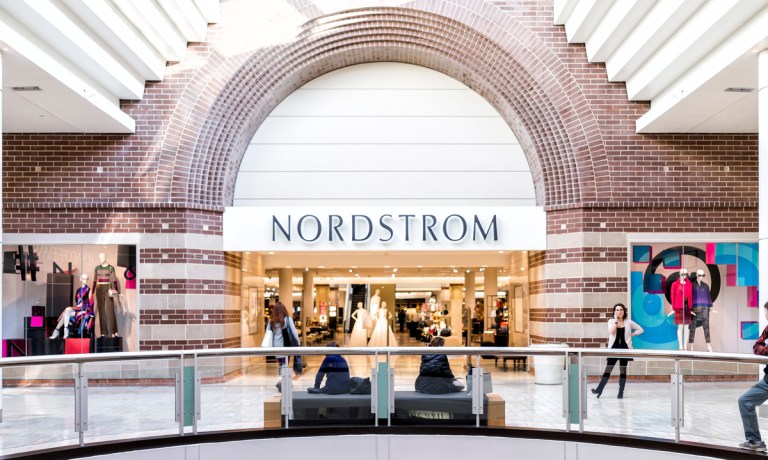
In the previous quarter, PYMNTS dubbed Nordstrom’s strategy of excessive discounting as the “big blue mistake.” However, on Wednesday (May 31), the retailer has proven itself resilient by posting a surprise quarterly profit and surpassing revenue estimates. The company’s turnout was attributed to improved inventory control and increased demand from affluent shoppers.
“We are pleased with the progress we’re making against the key priorities we laid out for 2023 as we continue to enhance our overall customer experience, improve Nordstrom Rack performance, increase inventory productivity and optimize our supply chain operations,” said Erik Nordstrom, chief executive officer of Nordstrom. “We’re encouraged by our momentum, especially given the uncertain macroeconomic environment. We remain focused on executing with agility and delivering long-term value to our shareholders.”
Following the release of its financial results, shares of the department store chain saw a 9.4% surge in extended trading.
The company not only upheld its sales and adjusted profit forecasts for 2023 but also indicated a positive trend in sales at its off-price Rack banner.
The spending habits of affluent Americans continue to support the clothing industry, particularly with the rise in demand for dresses and formal wear driven by the return-to-office trend and other social gatherings.
Moreover, the implementation of heavy promotions and discounts aimed at clearing excess inventories has attracted a larger number of shoppers, who now expect purchasing brands at a discount from Nordstrom.
According to PYMNTS’ April report, Nordstrom is set to launch nine new stores for its Nordstrom Rack off-price retail concept. The majority of these stores are scheduled to make their debut in the spring of 2024, with one store slated to open in 2025.
See also: Nordstrom Walks Back on Luxury and Leans Into Deep Discounts
The move to expand its off-price retail arm and engage in discounts is considered intriguing yet rather contradictory as the retailer was renowned for its high-end products and exceptional customer service, which were further strengthened by its investments in tools and technologies such as virtual style boards and online styling appointments. These investments proved fruitful, as digital customers ended up spending five times more than the average Nordstrom shopper, showcasing the positive outcomes derived from these initiatives.
However, it was revealed during its earnings report in March that the company’s performance was hindered by excess inventory. This outcome was not entirely surprising, as revealed in PYMNTS’ Consumer Inflation Sentiment study titled “The False Appeal of Deal-Chasing Consumers,” where it was found that 74% of consumers had reduced their nonessential retail purchases. As a result of this shift, Nordstrom had to provide more discounts than initially anticipated on its merchandise during November and December, aiming to ensure a strong start to the fiscal year.
See also: Deal Chasers Flock to Nordstrom, but Will They Stay for the Service?
Nevertheless, Nordstrom acknowledged the challenges posed by outdated product assortments and insufficient stock levels in crucial categories and has since taken steps to enhance its inventory management practices. Additionally, the company collaborated with well-known national brands to drive foot traffic and elevate customer engagement within its stores.
At the end of the quarter on April 29, Nordstrom witnessed a 7.8% reduction in its inventory levels. Notably, activewear, beauty products, and men’s apparel stood out as top-performing categories during this three-month period.
“Our focus on these key priorities allows us to better serve our customers through great brands at great prices at the Rack and more product newness and better flow across our banners, while also positioning us for more profitable growth,” said Pete Nordstrom, president and chief brand officer of Nordstrom.
Although Nordstrom’s Rack division fell 11.9% in quarterly sales, the company observed an upward trend as the quarter progressed. Furthermore, Nordstrom has been proactively expanding its Rack store presence as a part of its strategy to cater to budget-conscious shoppers.
In contrast to the prevailing gloom in the retail industry and the cautious forecasts made by several retailers like Target and Home Depot, Nordstrom has joined apparel chain Abercrombie & Fitch in standing out as an exception. Nordstrom has managed to defy the challenges and exhibit resilience in the face of the industry’s uncertainties.
On May 24, Abercrombie & Fitch surprised analysts by reporting an unexpected profit and revising its outlook for the entire year, surpassing expectations. These results emphasize the resilience of consumer spending in specific segments and underscore the ongoing demand for fashion items, despite the challenges prevailing in the market.
See also: Abercrombie Transforms Controversy Into Profits
Nordstrom finished out the quarter with a decline in total company net sales by 11.6% and a decrease in gross merchandise volume (GMV) by 11.9% compared to the same period in fiscal 2022. The wind-down of Canadian operations negatively impacted total company net sales by 175 basis points. Specifically for the Nordstrom banner, net sales decreased by 11.4% and GMV declined by 11.8% compared to the same period in fiscal 2022.
For the Nordstrom Rack banner, net sales decreased by 11.9% compared to the same period in fiscal 2022. The elimination of store fulfillment for Nordstrom Rack digital orders during the third quarter of fiscal 2022 had a negative impact on first-quarter Rack banner sales, lowering it by approximately 600 basis points.
Digital sales witnessed a decline of 17.4% compared to the same period in fiscal 2022. The combined impact of eliminating store fulfillment for Nordstrom Rack digital orders during the third quarter of fiscal 2022 and the sunsetting of Trunk Club earlier in fiscal 2022 negatively affected first-quarter digital sales by approximately 800 basis points. Digital sales accounted for 36% of total sales during the quarter.